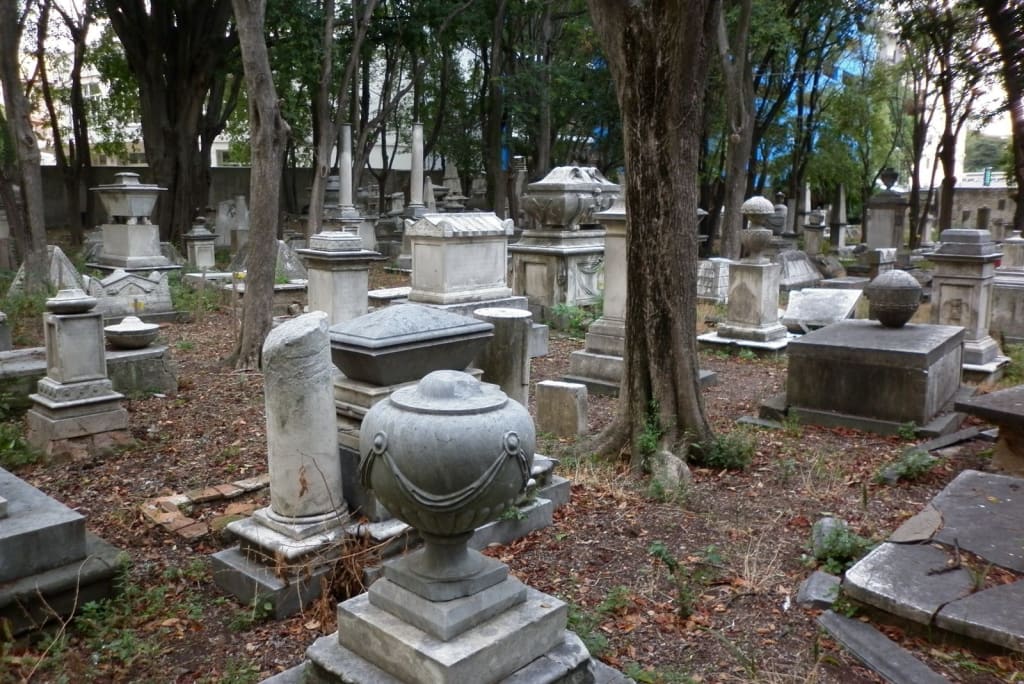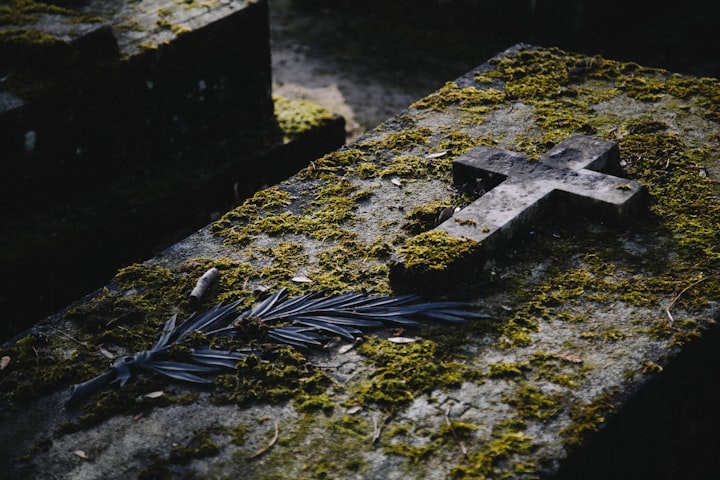An old English Cemetery
The English cemetery

With the Livornine laws, promulgated by Grand Duke Ferdinand I, starting from 1590, to promote the economy and the repopulation of an unhealthy and malarial area, first the Jewish communities , and then all the others, were allowed to settle in Livorno. The main purpose was to attract wealthy Sephardi communities.
The Holy Inquisition of Pisa, however, was not far off, and those who professed another faith, even if protected by special laws, had to do so with caution and without ostentation. Non-Catholic places of worship and even cemeteries were prohibited. Before the construction of the English cemetery, those who died foreigners in our land ended up buried outside the walls, together with the animals.
The studies carried out by the Livorno Association of Nations have led to new discoveries and to overturn many theories about the English cemetery in via Verdi. The date written on the sign is at least one hundred years wrong. The will of an English merchant was discovered in London in 1643. He leaves 150 pounds for the purchase of a burial ground for the English nation in Livorno. The first and oldest burial dates back to three years later, 1646, in the upper left corner of the cemetery, belonging, coincidentally, to Daniel Oxenbridge, a friend of the person who wrote the will.
The one in Via Verdi is the oldest English cemetery in Livorno, the oldest cemetery in Italy and even the oldest English cemetery in the mediterranean area. It hosted 450 tombs from 1646 to 1840 on half a hectare of land. Its historical importance is very remarkable. In 1735, on a map, it is already defined as the old cemetery. The official authorization for the burials arrived only in 1737, since then all those of non-Catholic religion who were dying in the vicinity were buried here, even if they did not live in Livorno. It was the only place in Italy where Protestants from all over Europe, Huguenots, Waldensians, Swedes, Swiss etc. could be buried.
The main entrance is U-shaped, before the war there were a low wall and a gate now destroyed. During the period of its construction, the cemetery was close to military posts and for this reason it could not have walls or monuments that were too high.
Making a grave in the English cemetery was at least as expensive as the repatriation of the body, and only the wealthiest could afford it. Mostly they are wealthy merchants with their families. A grouping of burials by guilds was noted.
The most famous and most visited tomb is that of the Scottish writer Tobias Smollett, (1721–1771) author, among other things, of the famous “The Expedition of Humphry Clinker”. Smollett lived in Montenero, he died in 71, even if on the tombstone it is incorrectly written 73. His tomb does not differ from many similar ones, an obelisk stands out, according to the Egyptian fashion that raged after the Napoleonic expeditions to Africa. Now it is extremely bare, the metal parts, the marble sphere on the top and the other four lateral spheres have been stolen. Tourists, even those of the eighteenth century, stripped the tomb to take home a piece of marble as a souvenir.
The explorer William Broughton is also buried here, his tomb was found on top of another. In fact, during the Second World War, the cemetery was devastated by bombing. Two photographs found in London prove this. At the end of the war, the bombed tombs were badly and hastily reassembled with pieces of one aggregated to the other and it is now difficult to establish what belongs to whom. Of the 130 tombs that have disappeared, the Association has managed to track down 30 to date.
Many people belonging to the Lefroy family are buried in this cemetery, starting with grandfather Antonio. The Lefroys are known because Jane Austen, who had an unfortunate love affair with one of their descendants, talked about them.
We also find:
Baron Von Stosch, controversial figure, spy for the English government, friend of the archaeologist Winckelmann, who gave rise to the first Masonic sect of the eighteenth century;
Francis Horner, English parliamentarian and friend of Ugo Foscolo;
Vieusseux’s father and another relative of him, Pietro Senn, founder of the Chamber of Commerce and the Leopolda railway;
John Wood, captain of the Peregrine, ship protagonist of the battle of Livorno in 1653, between the English and the Dutch;
the thirteen year old William Thompson, a sailor for whom someone wanted a fate other than burial at sea;
Louisa Pitt, mistress of William Thompson Backford (1760–1844) author of the gothic novel Vathec;
Mrs Mason, or Margaret King, writer and doctor, pupil of Mary Wollstonecraft, friend of her daughter Mary Shelley and her husband Percy Bysshe Shelley, who opened a salon in Pisa frequented by the best minds of the time.
A separate discussion concerns the tomb of William Magee Seton, husband of Elisabeth Seton, an American saint. The pastor of the parish of the same name intervened in 2004 with an excavator in a land that does not allow the entry of such vehicles — to the point that the volunteers of the association are forced to cut the unsafe branches by hand. The exhumation of the remains of Elisabeth’s husband seriously damaged the tomb. Note that William Seton was a Protestant and not a Catholic.
The cemetery was not planned for people to spend time there, as in the great Pere Lachaise cemeteries in Paris or Highgate in London.
There are triangular prism tombs, very similar in shape to those found in Jewish cemeteries in Holland and in Sephardi communities, confirming a privileged relationship between the Jewish and Protestant religions, both based on direct exegesis of the Old Testament. The graves of the English cemeteries in Tunisia and Greece are different. In addition to the triangular prism shape, there are also slabs and mixed monuments with column, obelisk and others.
The symbols inscribed on the tombs become more complex and more beautiful with the passing of the years, as the Baroque seventeenth century progresses towards the neoclassical style of the late eighteenth century. There are references to the macabre dance, according to a trend that came into vogue after the plague of the fourteenth century, to the phoenix, to the pomegranate — connected to the myth of Persephone — to the ouroborus, the snake that eats its own tail, torches, intertwined hands.
The Association carried out the census and mapping of the tombs, both those on site and those that can only be found in documents, developing an integrated database with studies from all over Europe and centered on the plan of the architect Soggi. Volunteers are dedicated to cleaning, cutting the grass and collecting waste. They also tried to protect the cemetery during invasive works for the construction of the parking lot in the area of the former Odeon cinema.
A collaboration with the Faculty of Agriculture of the University of Pisa, represented by Professor Giacomo Lorenzini, has produced new knowledge on the present vegetation, debunking the legend of the presence of the famous Virginia elm which is, in reality, a hackberry.
About the Creator
Patrizia Poli
Patrizia Poli was born in Livorno in 1961. Writer of fiction and blogger, she published seven novels.






Comments
There are no comments for this story
Be the first to respond and start the conversation.